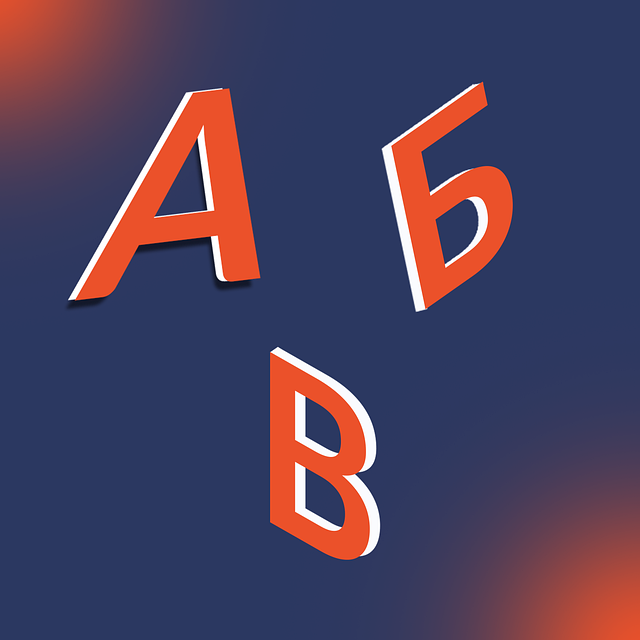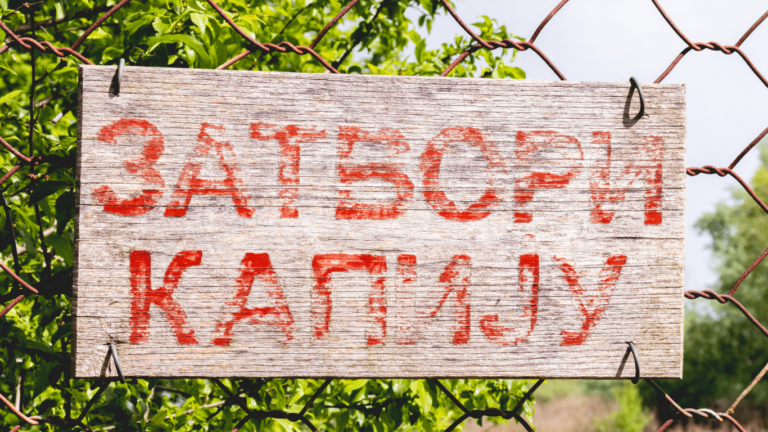Written by: Olivera Tolimir
If you asked yourself (and Google) the question from the title, you probably fall into one of two groups of people who want to learn Serbian.
First group: you’ve already started to learn Serbian and realized it’s not as bad as you thought. There are some tricky parts, but it’s not impossible to master them, so you feel good about yourself. That’s great!
But (there’s always a “but”) you still feel bad about avoiding one part of the Serbian language – the Cyrillic script. You think it’s time to face it, and you’re ready to ace this weird-looking alphabet! Congratulations, and let’s dive right into it!
If you don’t find yourself in the description above, you’re a part of the second group, so your current thought process probably looks like this: “Wait, I still haven’t started to learn Serbian, so I don’t understand anything. How can you know anything about a language if you don’t know the letters yet?!” If this refers to you, maybe we should take a step back and say something about the Serbian alphabets (the plural is not a mistake).

The Two Alphabets of the Serbian Language
One of the things that makes the Serbian language so distinctive is its two alphabets – Cyrillic and Latin. Our language has 30 sounds represented by a letter in both alphabets. So, both alphabets have 30 letters assigned to 30 sounds. The Cyrillic alphabet is called azbuka, and the Latin one is abeceda. It means you can write every word in Serbian in two different ways.
If this sounds complicated, don’t worry. It’s not. Our language is phonetic – we pronounce words the same way we write them. It means that, as soon as you learn Serbian letters, you’ll be able to read and write anything you want! We’ve already mentioned this fun fact in one of our previous texts, where you can also find the longest word in Serbian!
Now that we’ve remembered the crucial information about the Serbian alphabets, we can learn Serbian Cyrillic step-by-step! Oh, and one more thing: if you’re an absolute beginner in Serbian and your native language uses the Latin alphabet, it would be wise to learn the Latin version of Serbian letters before you dive into Cyrillic. It would make your learning process a lot easier. On the other hand, if your native language uses Cyrillic and you know English well enough to be reading this text, lucky you! Both our alphabets will be a piece of cake for you!
Brotherhoods of Letters
The best way to learn Serbian Cyrillic is to divide the 30 letters into groups and memorize them, group by group. There’s a Serbian proverb: Sličan se sličnom raduje. It means that people who are alike, tend to get along. Let’s think of our letters the same way. We’ll divide them into groups:
- Letters that are written the same way as in the Latin alphabet
- Letters that are different from the Latin ones
- Letters that are written the same way as certain Latin ones but pronounced differently.
Letters written the same as in the Latin alphabet
Certain letters are written the same way in Cyrillic and Latin. Those will be the easiest for you to remember:
A – pronounced like A in the Serbian word avion (airplane)
E – pronounced like E in Evropa (Europe)
J – pronounced like J in jutro (morning)
K – pronounced like K in konj (horse)
M – pronounced like M in maj (May)
O – pronounced like O in ogledalo (mirror)
T – pronounced like T in trava (grass).

Letters that are different from the Latin ones
Б – in Latin alphabet: B (Latin: banana; Cyrillic: БАНАНА)
Г – in Latin alphabet: G (Latin: guska; Cyrillic: ГУСКА) – “guska” means “goose”
Д – in Latin alphabet: D (Latin: drvo; Cyrillic: ДРВО) – “drvo” means “tree”
Ћ – in Latin alphabet: Ć (Latin: ćurka; Cyrillic: ЋУРКА) – “ćurka” means “turkey”
Ђ – in Latin alphabet: Đ (Latin: đak; Cyrillic: ЂАК) – “đak” means “student”
Ж – in Latin alphabet: Ž (Latin: žaba; Cyrillic: ЖАБА) – “žaba” means “frog” and it looks like a frog from above
З – in Latin alphabet: Z (Latin: zebra; Cyrillic: ЗЕБРА). Since it looks like a number 3, try to remember a sentence, “There are 3 zebras in a zoo”!
И – in Latin alphabet: I (Latin: igla; Cyrillic: ИГЛА) – “igla” means “needle”. It kind of looks like 3 needles put together.
Л – in Latin alphabet: L (Latin: leopard; Cyrillic: ЛЕОПАРД)
Љ – in Latin alphabet: LJ (Latin: ljubav; Cyrillic: ЉУБАВ) – “ljubav” means “love”. Try to remember that Љ looks like a pregnant Л, so it will remind you of love. 🙂
Њ – in Latin alphabet: NJ (Latin: njuška; Cyrillic: ЊУШКА) – “njuška” means “snout”
П – in Latin alphabet: P (Latin: prase; Cyrillic: ПРАСЕ) – “prase” means “pig”
Ф – in Latin alphabet: F (Latin: Francuska, Cyrillic: ФРАНЦУСКА) – “Francuska” means “France”
Ц – in Latin alphabet: C (Latin: crkva; Cyrillic: ЦРКВА) – “crkva” means “church”
Ч – in Latin alphabet: Č (Latin: četiri; Cyrillic: ЧЕТИРИ) – “četiri” means “four”. It looks like an upside-down chair, so it can help you remember the pronunciation.
Џ – in Latin alphabet: DŽ (Latin: džin; Cyrillic: ЏИН) – “džak” means “giant” and the words “džak” and “giant” start with the same sound.
Ш – in Latin alphabet: Š (Latin: šuma; Cyrillic: ШУМА) – “šuma” means “forest”
Letters written the same way as certain Latin ones but pronounced differently
B – in Latin alphabet: V (Latin: veverica; Cyrillic: ВЕВЕРИЦА) – “veverica” means “squirrel”. Do you know how a squirrel looks with a mouth full of hazelnuts? Its cheeks look round, just like the letter B.
Н – in Latin alphabet: N (Latin: ne; Cyrillic: НЕ) – “ne” means “no”
Р – in Latin alphabet: R (Latin: ruža; Cyrillic: РУЖА) – “ruža” means “rose”
C – in Latin alphabet: S (Latin: san; Cyrillic: САН) – “san” means “dream”. Try to memorize its connection with its Latin counterpart by remembering it looks like half of the letter S.
У – This letter doesn’t exist in the Serbian Latin alphabet, but it looks like an English y. It corresponds with the letter U in our Latin alphabet (Latin: uvo; Cyrillic: УВО) – “uvo” means “ear”.
Х – This letter also doesn’t exist in the Serbian Latin alphabet, but it’s a common mistake to read it as an English x (exercise). This letter represents a Serbian H in the Latin alphabet (Latin: heroj; Cyrillic: ХЕРОЈ) – “heroj” means “hero”.
This was a basic step-by-step guide to learn the Cyrillic alphabet. If you want some tricks on how to learn it, here are 6 tips to master the Serbian Cyrillic alphabet!
The Serbian Cyrillic alphabet is covered in our Serbian Upper Beginner A1.2 self-paced course! We will show you how to write the letters, and you will have plenty of exercises to practice. Check it out!



